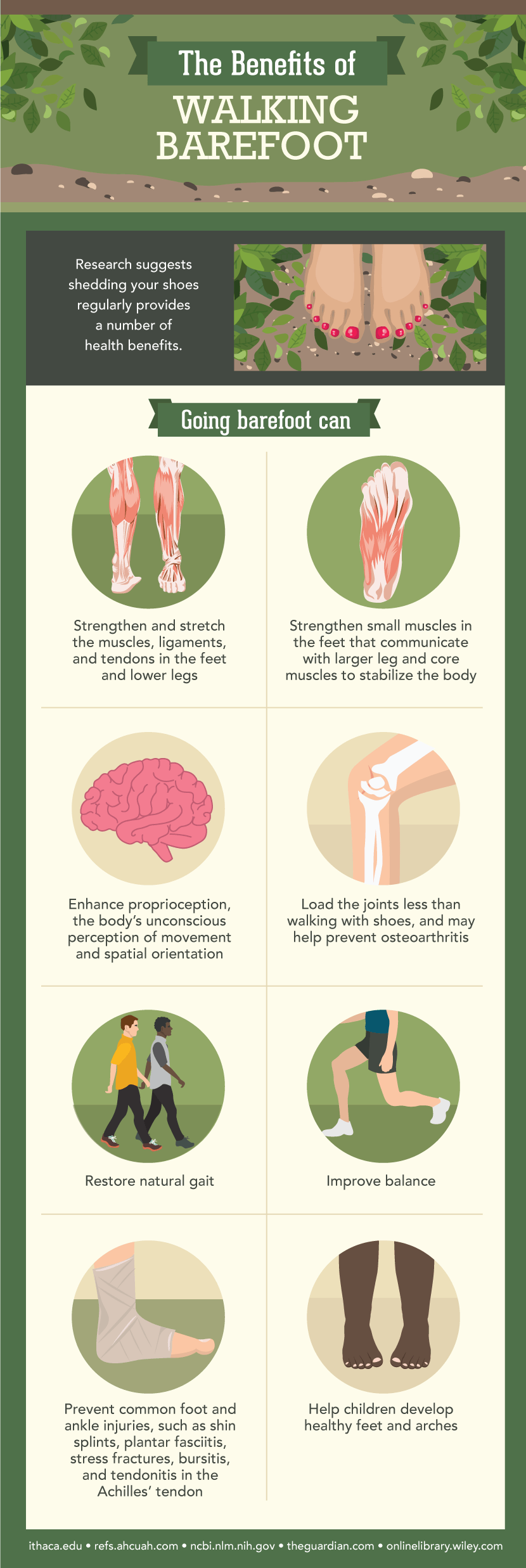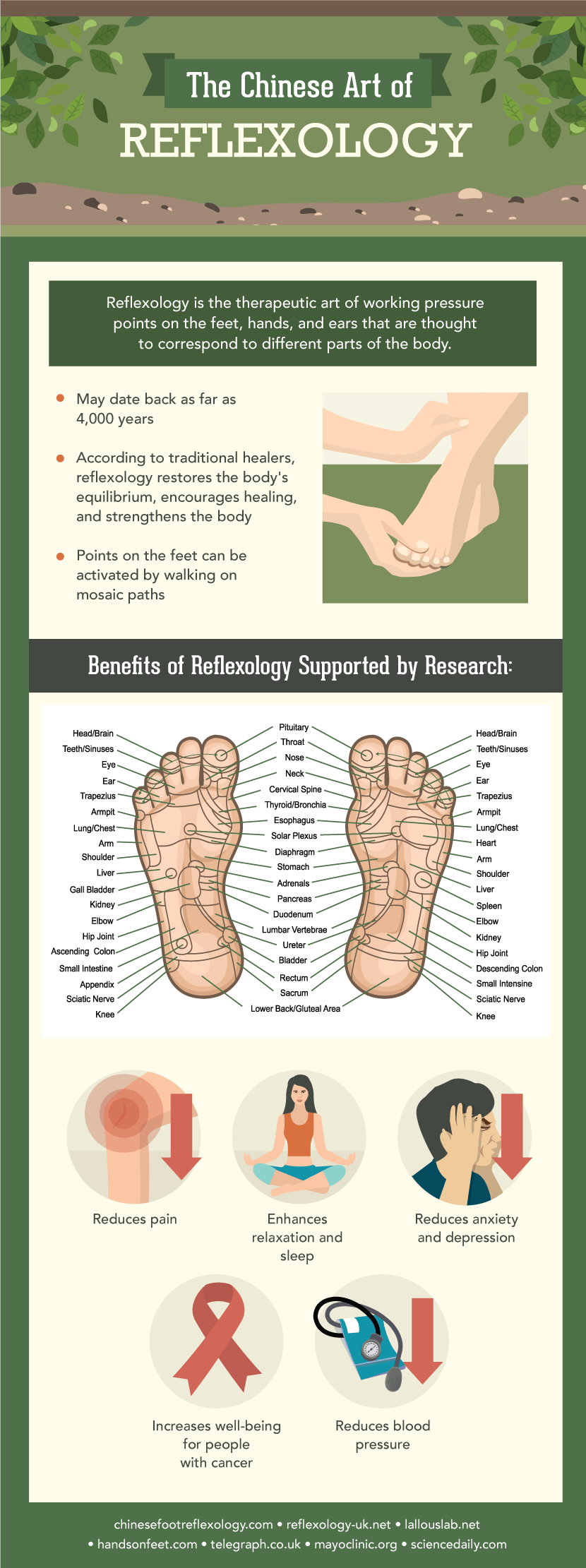Barefoot Gardening
How to Design a Garden for Your Feet
Most people can’t wait to kick off their shoes at the end of the day, and there’s good reason for that. Each foot contains up to 200,000 nerve endings.http://nymag.com/health/features/46213/index2.html The soles of your feet are sensory organs and they’re designed to touch the ground.
Fortunately, there’s a safe and enjoyable way to go barefoot more often, and in doing so benefit the entire body: Make your yard barefoot-friendly! By planting “steppable” plants designed for foot traffic and using sole-friendly landscaping materials, you can get a daily foot workout and massage. In the process, you may strengthen your feet and ankles, restore your natural gait, improve balance and posture, prevent common injuries, and increase your general well-being. Read on to find out more about barefoot gardening.
Why Go Barefoot?
Bottom line: If you don’t shed your shoes very often, you’re probably missing out on the many benefits of connecting bare feet to the ground.
According to research conducted by Patrick McKeon, a professor at Ithaca College’s School of Health Sciences and Human Performance, when we walk barefoot, the small muscles in our feet communicate with larger muscles in our legs and core through a feedback loop. However, that communication is largely disconnected when we wear shoes. McKeon explains that routinely shedding footwear reintroduces the loop, improves balance and posture, and prevents shin splints, plantar fasciitis, stress fractures, and other injuries.http://www.ithaca.edu/news/releases/going-barefoot:-strong-foot-core-could-prevent-plantar-fasciitis,-shin-splints,-and-other-common-injuries-40536/#.V3G6daIzLiA
Moreover, what we wear (or don’t wear) on our feet affects the health not only of our feet and lower body – it also affects how we move every body part. Sensory information from the nerve endings on the soles is “used by the brain to make subtle adjustments in your gait to protect bones and joints all the way up your body and to maximize the efficiency of your movements,” writes anatomy professor Daniel Howell, author of The Barefoot Book.http://barefootprof.blogspot.com/2011/04/foot-anatomy-101-biofeedback.html
To fully understand this concept, think about how much harder you step down when you wear heavy boots than when your feet are bare. Less padding on the feet translates to less impact on the body because you’re instinctively more aware of how you move when your feet are bare.http://nymag.com/health/features/46213/index2.html Philip Maffetone, author of Fix Your Feet, calls this innate awareness “foot sense.”http://bit.ly/296eZ69
Do you already go without shoes indoors? That’s a great practice for building strong, supple feet. Walking barefoot outside on natural, varied terrain provides even more structural benefits according to biomechanist Katy Bowman, author of Whole Body Barefoot.https://nutritiousmovement.com/barefoot-not-just-for-adults/

Moreover, walking barefoot outside may provide some additional health benefits that aren’t fully understood. A dozen peer-reviewed studies summarized in the Journal of Environmental and Public Health suggest connecting with the earth, as we do when we’re walking outdoors with bare feet, improves sleep, normalizes levels of the stress hormone cortisol, reduces pain, reduces stress, increases heart rate variability (a sign of heart health), decreases inflammation, and speeds wound healing. Researchers theorize the reason may be because we absorb free electrons, which act as antioxidants, from the ground; these substances may prevent or stop cell damage in the body.https://www.dovepress.com/aims-and-scope-journal-of-inflammation-research-d27-j35http://www.ncbi.nlm.nih.gov/pmc/articles/PMC3265077/
Even with all these benefits, not many people will leave their shoes at home. Footwear protects against cuts, abrasions, debris, and cold and hot surfaces. Plus there are fashion and cultural norms to consider. But a barefoot-friendly backyard is a great place to safely enjoy the benefits and pleasures of going barefoot. You can even transform your yard into a healing retreat for your feet.
Designing a Barefoot Garden
Barefoot gardens are not exactly new. Europeans have more than a dozen public barefoot parks where people come to walk without shoes on various terrains and get “the opportunity to enjoy barefoot life.” At Barfußpfad in Germany, visitors take a roughly two-mile barefoot walk across various textures, including pinecones, grass, sand, stones, mud, loam, logs, and a river.https://www.tripadvisor.com/Attraction_Review-g494948-d3141288-Reviews-Barfusspfad-Bad_Sobernheim_Rhineland_Palatinate.html
The easiest way to make your yard barefoot-friendly is to consider your feet when choosing landscaping materials. If you have a lawn, you already have many people’s favorite walking material. Also consider durable plants that tolerate foot traffic, such as creeping perennials, creeping groundcovers, and Irish moss; these can surround stepping stones and garden areas and typically require less water and care than grass. They’re sometimes called “steppables” or “walkables.”https://www.stepables.com/scripts/STEPABLE_Pathways.html
Avoid materials that make shoes more appealing, such as sharp gravel and splintery fir bark mulch. And don’t hesitate to add materials exclusively for the pleasure of your soles. Sand, stones, and pea gravel are generally favorites.

Relaxing with Reflexology
Long before barefoot parks, the Chinese developed reflexology, an ancient practice where a massage therapist stimulates pressure points on the feet to improve health. In Asian countries, many people walk barefoot on pebble mosaic reflexology paths to massage the foot points. Paths intended for barefoot walking are common features in parks, resorts, and private gardens, and at the base of mountain trails.http://www.chinese-holistic-health-exercises.com/reflexology-walking-paths.html

You can build your own reflexology path in your yard by embedding stones in concrete. First, you’ll need to collect colorful stones of various sizes, either from river and creek beds or lakeshores, or in the landscaping department of a home improvement center. Meanwhile, think about a location and design for your path. You can control how gentle or deep your foot massage is by laying the stones flat or sideways, and you can develop beautiful works of art by arranging different colored stones in rows, spirals, and other designs. Look online for inspiration and step-by-step tutorials.http://www.familyhandyman.com/garden-structures/garden-paths/how-to-make-a-stepping-stone/step-by-stephttp://www.finegardening.com/create-pebble-mosaic For a less-permanent reflexology path, you can purchase a premade cobblestone reflexology mat, available from many online retailers.
A foot washing station is the perfect finishing touch for a barefoot garden. Locate it near the back door to keep dirt and debris outdoors where it belongs.

Developing Foot Sense
Barefoot gardens are not for everyone. If you live in rattlesnake country, for instance, you probably want to wear shoes outdoors. Speak to your doctor if you have a medical condition, such as diabetic neuropathy. For most people in most places, walking barefoot in the yard probably poses minimal risks, especially because you’re naturally more aware of your surroundings when your feet are bare.
You may have heard of a parasite called hookworm that you can get from walking barefoot. Because it’s transmitted through soil contaminated by human waste, it’s a problem in parts of the world without sanitation systems. However, it is virtually nonexistent in the U.S., and the hookworm dogs get does not infect human intestines. (But it can cause a skin condition, so it’s best to clean up animal waste.)http://www.cdc.gov/parasites/sth/http://www.wormsandgermsblog.com/files/2008/04/M2-Hookworms.pdf
If you need a boost of confidence, consider podiatrist Samuel B. Shulman’s 1940s study of people who’d never worn shoes in various parts of India and China. Shulman interviewed and inspected nearly 4,000 men and women and found their feet were remarkably dexterous, and they suffered little foot pain or disability. Moreover, 180 of them were rickshaw drivers who ran barefoot all day on cobblestone streets. “If anything, their feet were more perfect than the others,” Schulman writes.http://refs.ahcuah.com/papers/shulman.htm It’s also worth noting that many people run marathons unshod.https://www.olympic.org/videos/abebe-bikila-barefoot-to-olympic-gold
In other words, our feet are probably capable of more than we think.
However, it’s best to transition gradually. If your feet are accustomed to being exclusively in shoes during waking hours, expect some pain at first while your soles and brain adjust to new sensations. Fortunately, when your feet are bare, you naturally change position and weight loads for the least impact on your feet and body. Slowly introduce new sensations and pay attention to your surroundings and your body’s cues, and before you know it, you’ll be enjoying the benefits of your barefoot garden.
Embed the article on your site

